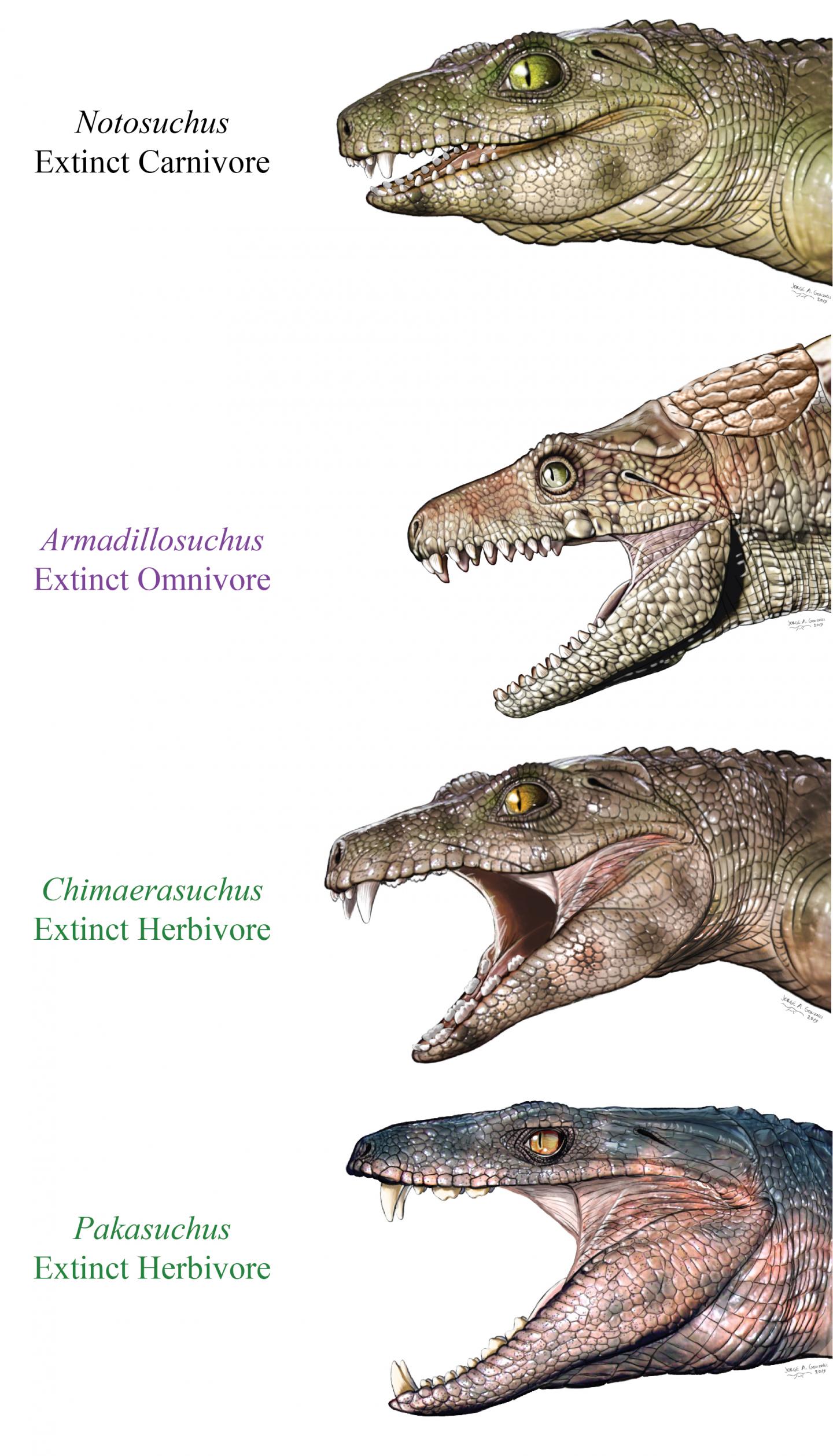Crocs are arguably the crème de la crème of carnivores, armed with a jaw full of huge teeth perfectly adapted for ripping flesh, not to mention a highly acidic stomach that can break down animal bones. While they can and do eat fruit and vegetables, meat is undoubtedly their meal of choice. But this bloodthirsty lifestyle probably wasn’t always the way for some.
The rest of this article is behind a paywall. Please sign in or subscribe to access the full content.
In recent years, scientists have come across the remains of several ancient crocodyliforms – the group including all living and extinct relatives of crocodiles and alligators – that appear to have lived on a herbivore diet.
This theory is largely based on fossilized teeth. In 2019, researchers at the University of Utah and the Natural History Museum of Utah studied 146 teeth from 16 different species of extinct crocodyliforms in an effort to reconstruct their diets.
“Carnivores possess simple teeth whereas herbivores have much more complex teeth. Omnivores, organisms that eat both plant and animal material, fall somewhere in between,” Keegan Melstrom, a palaeontologist and the study’s lead author, said in a statement.
“Part of my earlier research showed that this pattern holds in living reptiles that have teeth, such as crocodylians and lizards. So these results told us that the basic pattern between diet and teeth is found in both mammals and reptiles, despite very different tooth shapes, and is applicable to extinct reptiles,” he added.

Paleoart reconstructions of extinct crocodyliforms.
The findings indicated that some species of extinct crocodiles had complex teeth, suggesting they were likely herbivores.
These plant-eating crocodyliforms appeared early in the evolutionary history of the group, just after the end-Triassic mass extinction, around 201 million years ago. They persisted until just 66 million years ago during the end-Cretaceous mass extinction, the infamous asteroid impact that killed all non-avian dinosaurs.
Throughout this period, plant-eating may have developed independently a minimum of three times, but possibly up to six times.
“Our work demonstrates that extinct crocodyliforms had an incredibly varied diet,” Melstrom said. “Some were similar to living crocodylians and were primarily carnivorous, others were omnivores, and still others likely specialized in plants. The herbivores lived on different continents at different times, some alongside mammals and mammal relatives, and others did not.”
Groups of animals radically “switching up” their diet over evolutionary time is not highly unusual. Up to 99 percent of the giant panda’s diet is made up of bamboo today, but this is a relatively recent development in their evolutionary history.
Studies indicate that ancient ancestors of pandas ate meat at least 2 million years ago. This is so recent, in fact, that modern pandas still effectively have the digestive system of a carnivore and can occasionally eat meat – they are still bears, after all.
Source Link: Crocodiles Weren’t All Blood-Thirsty Killers, Some Evolved To Be Plant-Eating Vegetarians